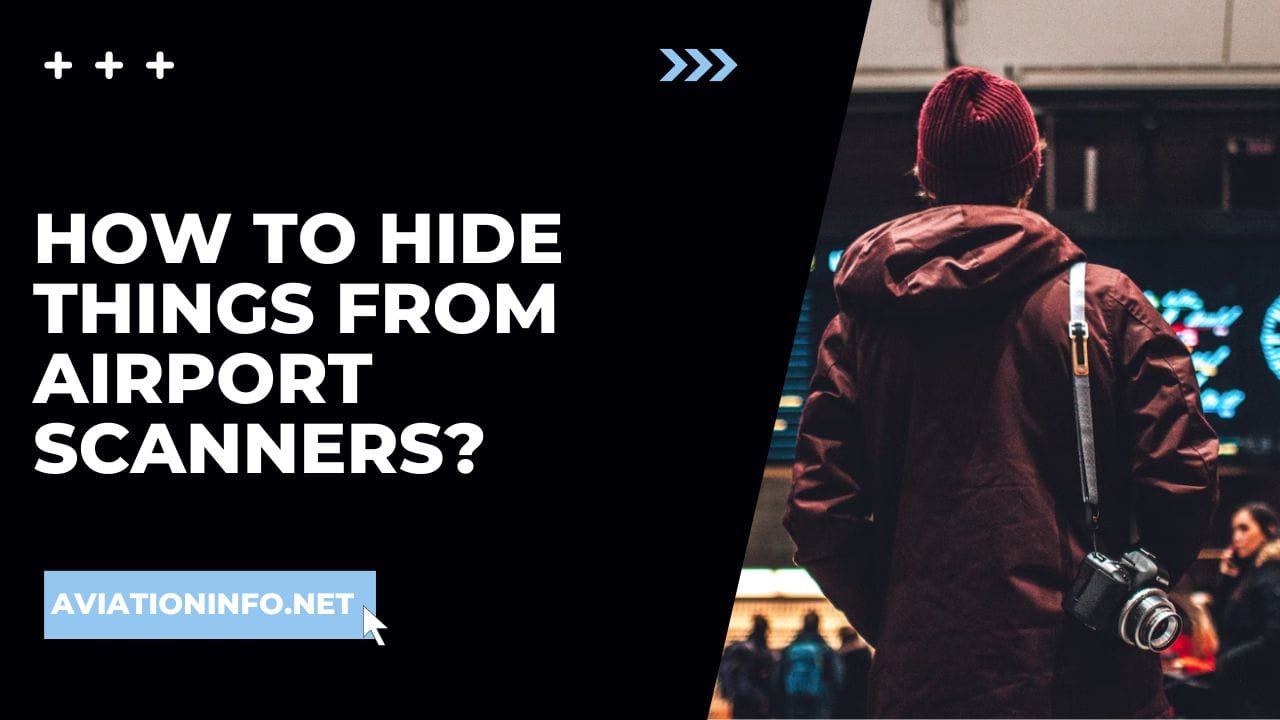Are you curious about the art of hiding items from airport scanners? While we always advocate for adhering to rules and regulations, we understand that there may be instances where you need to discreetly transport certain objects. In this guide, we will explore some strategies that people have utilized in the past to conceal items from airport security, shedding light on both the ethical and legal implications of such actions. Keep in mind that this information is solely for educational purposes and should not be used to engage in any illegal activities.
Hiding objects from airport scanners requires a careful balance of creativity and understanding of the scanning technology employed at airports. In this article, we will provide you with insights into the different types of scanners used, common hiding spots, and the potential consequences if you are caught. Remember, it is crucial to respect the safety protocols in place and to prioritize the well-being and security of yourself and others. So, let’s dive into this intriguing topic, exploring the nuances and complexities of concealing items from airport scanners.
- Choose small, non-metallic items that can be discreetly concealed in your carry-on luggage.
- Wrap the items in layers of clothing or place them inside toiletry containers.
- Consider using specialized concealment products like stash underwear or hidden pockets.
- Avoid carrying prohibited items or substances that could raise suspicion.
- Remember that attempting to hide items from airport scanners is illegal and can result in serious consequences.
How to Hide Things from Airport Scanners
Question: Can you hide things from airport scanners?
Answer: It is not recommended to hide things from airport scanners. Airport security is in place to ensure the safety of all passengers and the aircraft. Attempting to hide prohibited items can result in serious consequences, such as fines, legal trouble, or even being denied boarding. It is important to comply with airport security regulations and follow the instructions of the authorities.
That being said, there are certain legal and acceptable ways to transport certain items. For example, if you need to carry prescription medication, it is advisable to keep it in its original packaging with proper documentation. Additionally, valuable items such as jewelry or electronics can be safely carried in your carry-on luggage or on your person.
It is crucial to familiarize yourself with the specific regulations of the airport you are traveling from and to. Each airport may have different guidelines and requirements for security screenings. Always check the Transportation Security Administration (TSA) website or contact the airport directly for the most up-to-date information.
Question: Can body scanners at airports see inside your body?
Answer: Body scanners used at airports are designed to detect any objects that may be hidden on or within a person’s body or clothing. However, these scanners do not have the ability to see through the skin or show anatomical details. The primary purpose of body scanners is to detect potential threats, such as weapons or explosives, that may be concealed under clothing.
The technology used in body scanners can vary, but most commonly, they operate based on millimeter-wave technology or backscatter X-ray technology. Millimeter-wave scanners emit electromagnetic waves that are harmless to the human body but can detect hidden objects. Backscatter X-ray scanners use low levels of X-ray radiation to create an image of the body, highlighting any anomalies that may require further inspection.
It is important to note that body scanners are operated by trained security personnel who are responsible for ensuring the privacy and safety of passengers. The images generated by body scanners are typically viewed in a separate location away from the screening area and are not stored or shared.
Airport Security Tips (15 Travel Hacks and Secrets)
In conclusion, while it may be tempting to try to hide things from airport scanners, it is important to remember that these scanners are in place for our safety and security. Attempting to deceive or hide prohibited items can have serious consequences, including legal repercussions and delays in travel. Instead, it is always best to follow the rules and regulations set by airport authorities.
First and foremost, the best way to avoid any issues with airport scanners is to pack your bags carefully. Make sure to remove any prohibited items, such as liquids over 3.4 ounces or sharp objects, from your carry-on luggage. By double-checking your bags before heading to the airport, you can ensure a smoother and hassle-free screening process.
Additionally, it is essential to be aware of the latest regulations and guidelines regarding airport security. Stay informed about any updates or changes in the rules, as they can vary from one airport to another or even from one country to another. By staying up to date, you can avoid any surprises or misunderstandings when going through the security checkpoint.
Lastly, remember that airport security personnel are trained professionals who are skilled at detecting prohibited items. Trying to hide something from their scanners is unlikely to be successful and may result in additional scrutiny or delays. It is always better to be honest and transparent during the screening process, as this will help ensure a smoother and more efficient experience for everyone involved.
In conclusion, instead of trying to hide things from airport scanners, it is best to pack your bags carefully, stay informed about the latest regulations, and cooperate with security personnel. By following these guidelines, you can have a stress-free and secure journey through the airport.

After visiting more than 60 countries, I have probably been on every type of plane there is and visited countless airports. I did my very first international solo trip to South Africa at the age of only 16 and haven’t really stopped traveling since.
Despite the adventurous travel itch, I do have a nerdy side as well – which is satisfied by writing about all things aviation “too boring” for my regular travel blog.
